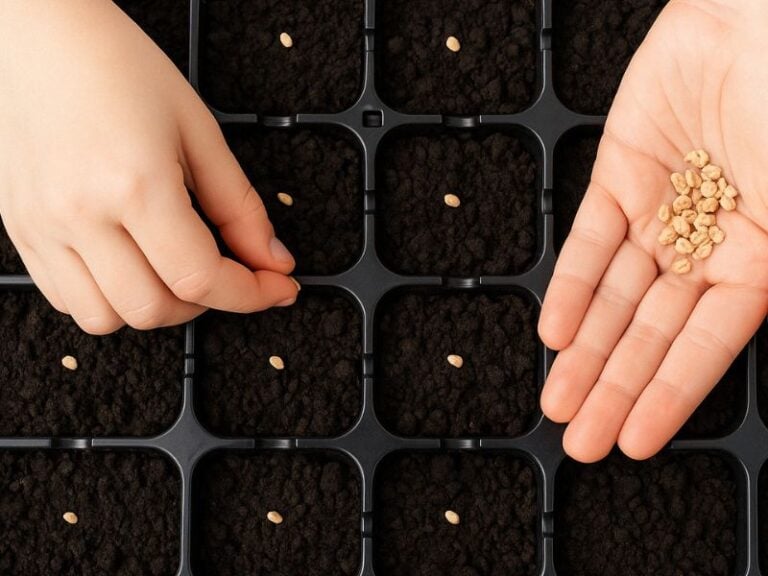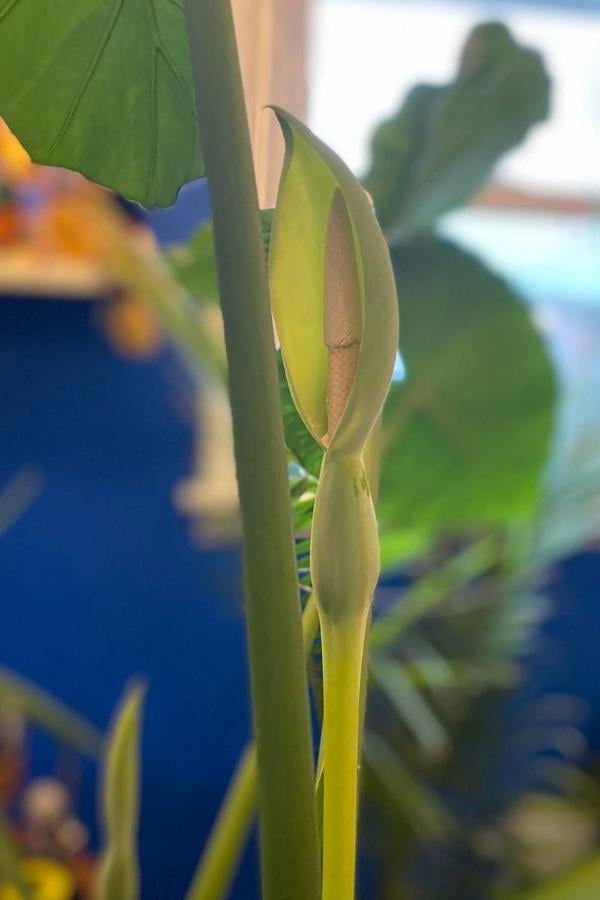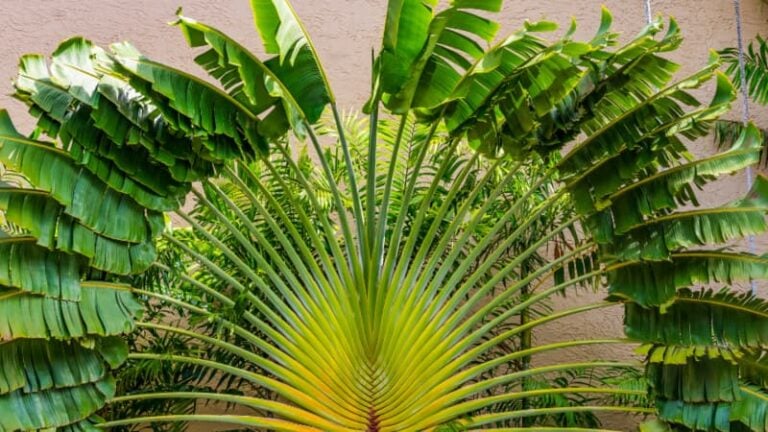Hosta is a fascinating ornamental and deciduous plant. The plant is easy to care for, attractive, and tolerant of shade.
You can do a lot with hostas in the garden, from edging to accenting other plants. Spring is an excellent time to plant this plant in the garden.
Contents
Hosta Bulbs (Bare Root Hosta): How to Choose, Save, Prepare

Hosta is a popular garden plant in the United States, and you can find it in garden centers and stores.
The most convenient way to plant a bare root hosta or bulb is usually sold in packages along with a nutrient-rich substrate.
A high-quality bare root hosta must meet the following criteria:
- There must be at least one growth bud on the (or at least two or three). Also, these buds should not become overgrown.
- Typically, the length of the roots is about ten centimeters.
- At the same time, you should choose plants with alive and flexible roots.
- The hosta bulbs shouldn’t have any mold, rot, or dryness.
- Also, the hosta bulbs should not be too wet (the package should not show drops of condensation).
Before purchasing a plant, I recommend researching its characteristics. This way, you’ll be able to pick the perfect variety for your needs.
Treating the Hosta Bulb
Before you plant a hosta bulb in the ground or in a pot to store it for a while, you need to prepare the planting material.
The first step is to inspect the roots thoroughly. If you find spots on the roots that are rotting, moldy, dead, or sick, you should cut them off with a sharp, clean knife. After that, use a fungicide to disinfect.
Also, if the roots are too long, they should be trimmed back and sprayed with wood ash or fungicide.
In either case, it is helpful to clean the hosta bulb by soaking it in fungicide or hydrogen peroxide. (one part 3% hydrogen peroxide to two parts water)
Preparation by soaking the roots in a growth-promoting solution can be helpful if they look lifeless due to dehydration.
How to Preserve Hosta Bulb Before Planting

Planting material for this plant is available for purchase as early as late winter or early spring.
If you’re one of the many people who buy their Hosta in advance, you’ll need to store the hosta bulb until you’re ready to plant it in the ground.
Plant the hosta bulb in a temporary container for storage.
The pot should be between one and ½ gallon in size, and the bottom must have holes for drainage.
Use any temporary planting soil for sprouts or make your own (mix in equal proportions of non-acidic peat, sand, leaf, or turf soil).
If you want to keep your Hosta in storage, you can follow the steps below:
- The bottom of the container should have a drainage layer of about one inch (for example, expanded clay, perlite).
- Make a large hole the size of the hosta bulb after filling the pot with soil.
- If you plant the hosta bulb in a pot with soil, position it so the roots are straight.
- The tip of the hosta bulb should remain slightly above the soil’s surface.
- After that, use plenty of fresh water to wet the soil thoroughly. After the regular watering, it is better to sprinkle the ground with a fungicide solution.
- Cover the top of the soil in the pot with more dirt if you don’t want a soil crust to form.
For best results, place it on a northern window sill or in a location with diffused light to prevent it from growing too quickly. Also, it’s best if the place is cool enough.
Before you plant the Hosta in the ground, you shouldn’t let the soil in the pot dry out. If necessary, add water. The soil should be moist but not sopping wet or bone dry before applying any water.
It is best to harden the rhizome two weeks before planting. To do this, put the container outside for short periods, starting two weeks before planting.
You can store the rhizomes in the refrigerator if you don’t have access to a temporary container for planting. But you can only keep them in the fridge if the buds aren’t growing.
However, storing them in the refrigerator for an extended period will cause them to rot.
When To Plant A Hosta in Spring in The Open Ground
First, the threat of spring frosts must pass, and the soil must warm up.
Depending on where you live, the timing for planting Hosta in spring can vary.
However, spring is the best time for hostas to adapt to a new environment because the sun isn’t as intense.
Note: You can also plant hosta seedlings in the summer in addition to the spring (early or late in the season). Planting hosta in the middle of the season, when the heat begins, is not recommended.
Planting A Hosta In The Spring: Step-By-Step Instructions
You need to know every step of planting a plant in the open ground to get the best results possible.

How Do You Decide Where To Put A Hosta In Your Yard?
When deciding where to plant a hosta in the open ground, you should think about the following:
- Hosta is a water-loving plant that can’t stand dry soil. Because of this, you shouldn’t pick places that dry out quickly (e.g., due to intense light or wind). The environment should be moist but not wet.
- The site should be protected from wind and cold drafts.
- Even though the plants need to be protected from the wind, the site must have enough airflow.
- Hosta is a water-loving plant, but it should not be grown in areas with stagnant water.
Important! Each hosta variety has unique lighting needs, so research before deciding where to put them in your garden.
Although the Hosta is tolerant of shade, it cannot be called a shade-loving plant in the general sense.
Lighting is key to growing a beautiful hosta in your garden. The Hosta will look its best when the proper lighting is used in the right place:
- When choosing where to plant a hosta, there is one rule that you must always follow: the spot should be in the shade during the hottest part of the day (from 12 noon to 5 p.m.). Even types of Hosta that like a lot of light have to follow this rule.
- Even though the Hosta can grow in the shade, you shouldn’t plant it in the deep shade because it won’t grow well there.
- You can only plant sun-loving hostas in open spaces. A bright midday sun will cause them to fade and lose their appeal, resulting in the leaves shape and color altering.
- You’ll notice that the perennial grows more slowly in shadier areas, but the leaves are more extensive, and the height is more significant.
- For example, plants with bright, variegated leaves are considered to be more light-loving than those with a single-color leaf.
- Hostas with leaves that are blue, or silver tend to do better in the shade (their leaves turn green in the sun);
- Hostas with yellow, gold, or bronze leaves grow better in places with more light.
- Planting varieties with a white border on their leaves in a shadier location will prevent the edge from burning out.
What Type of Soil Is Appropriate?
It is crucial to pick the right place to grow the Hosta and soil. The soil should meet the following requirements:
- It must be fertile, rich in humus and nutrients (ornamental leaves thrive in rich soil);
- Water-absorbing, moist, well-drained soil is ideal.
- In addition, the soil should be light, loose, well aerated, and air-permeable.
- The best choice is a slightly loamy soil that meets all the above requirements. Avoid planting the Hosta in heavy clay or light sand that quickly dries out because of the risk of it getting waterlogged.
How To Prepare The Land For Planting
Tip: It’s best to prepare the area and soil a month or more in advance, or at least a week or two.
Hosta’s success in the garden relies heavily on the quality of its soil, which can make or break its ornamental value.
If the chosen location’s soil meets the requirements above, you can plant the Hosta bulb immediately.
Site and soil preparation is necessary if it doesn’t meet all the requirements for planting the Hosta in spring:
- Excavate the site to a depth of 1.6 feet (that is, two prongs of a standard shovel).
- Use organic fertilizers like compost or humus to improve the soil’s quality (If the soil is too poor and hasn’t been fertilized in a long time, use two buckets per ten square feet instead of one and a half).
- For heavy clay soil, it’s best to add sand (a bucket per 10 square feet), but you can also use non-acidic low-lying peat if you want to (the same amount as the sand).
- Adding compost or sod soil (a bucket per 10 square feet) and the same amount of low-lying peat is recommended for sandy soil.
- After you’ve done most of the prep work, you need to dig over the area again and make the soil loose and even (with a rake).
Please note! Because Hosta roots grow horizontally, it is crucial to prepare the soil horizontally instead of deeply.
Planting A Hosta Bulb Correctly

Even a novice gardener can successfully plant a hosta because it does not require specialized knowledge or years of experience. Putting the Hostas in the correct locations is all that is needed.
- Make a planting hole. If you have more than one bulb, you need to keep the holes at the proper distance apart. The distance between the holes depends on how big the plant will grow: ½ feet for dwarf varieties with small leaves, 1 foot for medium types, 2 feet for large-leafed varieties, and 3 feet for the widest varieties. The hole where you plant the Hosta bulb should be twice as big as the bulb itself.
- Fill in the planting hole. You should only perform this step if you have not already begun site preparation! Fill one-third of the planting hole with a nutrient mixture, such as low-lying peat, compost, or humus (the ingredients are mixed in equal proportions). Sometimes you need to add sand to this mixture because the soil is clay and heavy. Then, cover the mixture with a thin layer of soil.
- Water the planting hole. You must water the hole one to two hours before planting the bulb.
- Fill the hole in the middle with dirt to make a mound.
- Put the Hosta bulb in the hole. Spread the roots out, evenly spaced on all sides of the mound. They should lie flat and not bend or stick up.
- Make sure the root neck is in the proper position. The Hosta’s root neck shouldn’t be buried, and the buds should stay on the ground. They are only partially covered by soil.
- Fill in the hole with soil. There should be no gaps between the roots; the soil should fill all the spaces. After filling the void, gently compact the soil with your hand.
- Water the Planted Hosta bulb thoroughly.
What To Do After Planting Hostas
After planting bare root hosta bulbs in spring, ensure proper care (especially in the first year) for a perennial ornamental-leafed plant:
- Keep the soil’s moisture level about right. Water is needed for normal rooting. Watering is essential in the first two weeks.
If the soil dips a few hours after you water it, you need to add more soil to get it back to where it was.
- It is best to put mulch around the bare hoot hosta bulb as soon as you plant it (2-3 inches). Mulch will keep water from evaporating and prevent the formation of a soil crust, preventing the normal flow of oxygen to the roots.
- For your convenience, you can hang a peg with the name of the species and variety next to the plant (this element is relevant when planting many seedlings of different types).
- If you have prepared the plot or filled the hole with fertilizer, you don’t have to feed the Hosta for the first two to three years.
- In the future, be sure to do regular weeding around your Hostas.
This is how you plant a lovely plant known as the “Queen of Shade.” First, you must store the material (so it doesn’t deteriorate, wither, and rot) and prepare the land because Hosta’s decorative qualities depend on its comfort.






